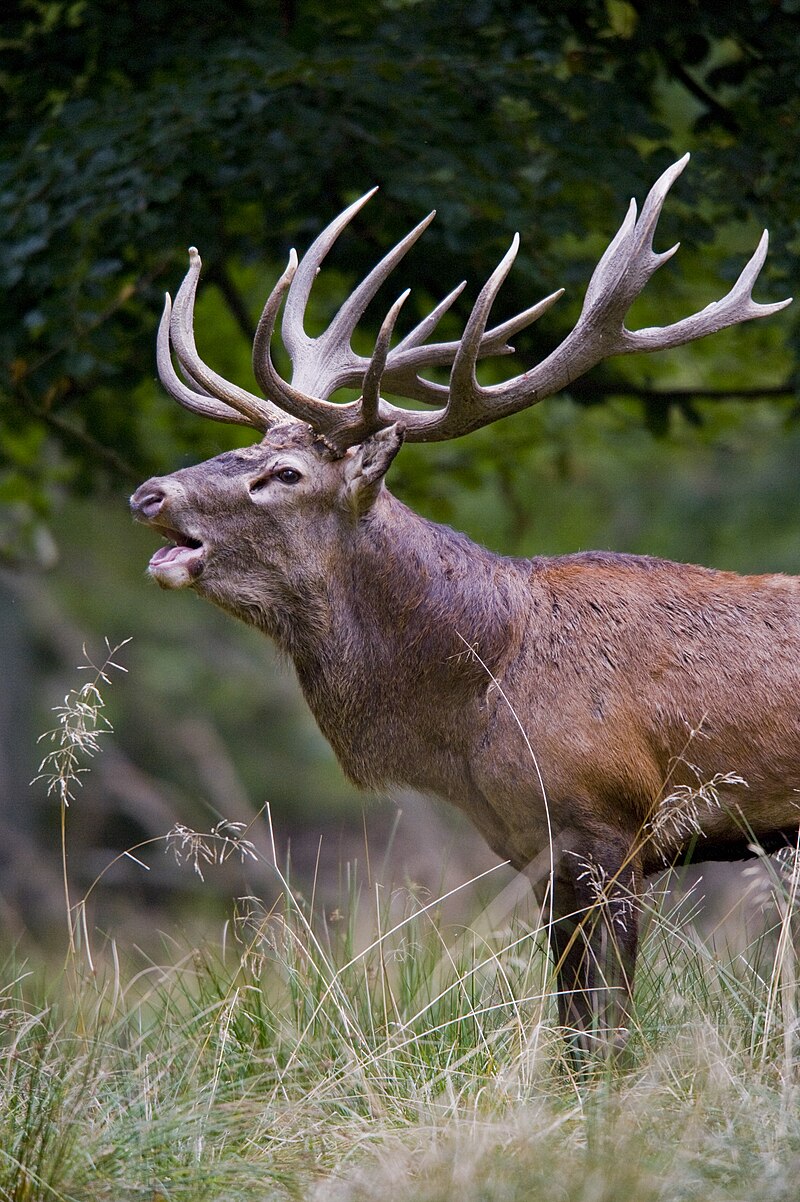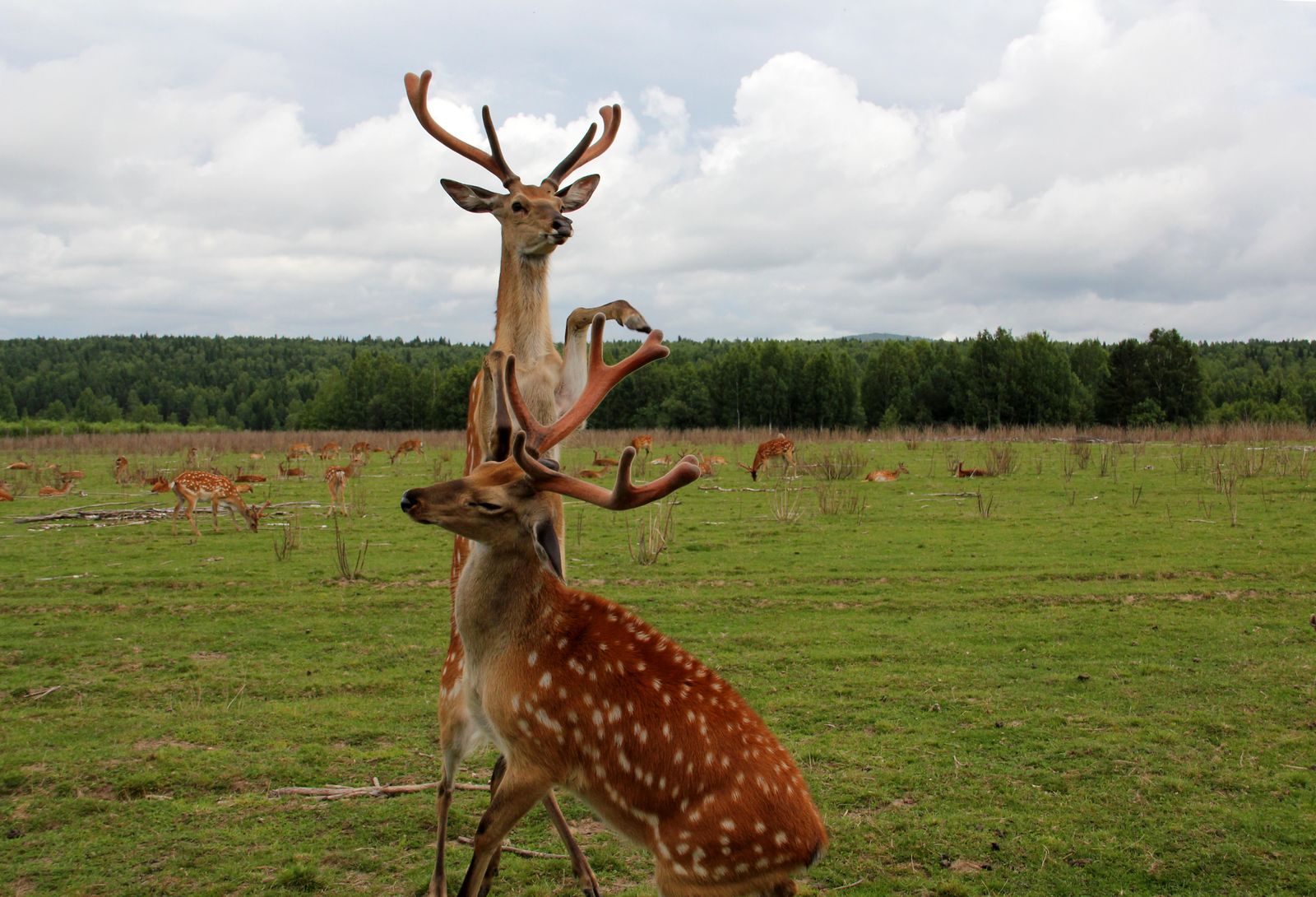Moose shed their antlers annually as part of a natural process to grow new antlers. This shedding typically occurs in late winter to early spring.
Witnessing a moose shed its antlers is a remarkable sight to behold in the wild. Understanding why and how this process occurs can provide valuable insights into the biology and behavior of these magnificent creatures. Throughout this article, we will explore the reasons behind moose shedding their antlers, the timeline of this annual event, and the significance it holds in the life of a moose.
By delving into these aspects, we can gain a deeper appreciation for the fascinating cycle of antler growth and shedding in moose populations. So, let’s dive in and uncover the mysteries behind this intriguing phenomenon.
The Antler Regeneration Process
Moose shed their antlers annually, making way for a fascinating process known as the Antler Regeneration. After the casting of the old antlers, a rapid regrowth phase ensues.
Antler Casting
In the Antler Casting phase, moose shed their antlers to facilitate new growth. This natural process often occurs after the mating season.
Rapid Regrowth
The Rapid Regrowth stage showcases the incredible ability of moose to regrow their antlers at a rapid pace. This regeneration process is governed by hormonal changes.

Credit: en.wikipedia.org
Factors Influencing Regeneration
Moose shedding their antlers is a fascinating natural phenomenon. The process of antler regeneration is influenced by various factors which play a crucial role in this annual cycle.
Hormonal Changes
Hormones signal the beginning of the antler regeneration process.
- Decreased testosterone levels prompt the shedding of antlers.
- Rising levels of growth hormones initiate the growth of new antlers.
Environmental Influences
The environment also plays a significant role in antler regeneration.
- Nutritional factors like diet impact the antler growth rate.
- Weather conditions can affect the duration of the regeneration process.
Ecological Impact
Moose shedding their antlers has a significant ecological impact on the surrounding environment. From nutrient cycling to social dynamics, this natural process plays a crucial role in the overall balance of the ecosystem.
Nutrient Cycling
The shedding of moose antlers contributes to nutrient cycling in the environment. When the antlers drop, they release important minerals such as calcium and phosphorus back into the soil. These nutrients then become available for plants and other organisms, supporting the overall health of the ecosystem.
Social Dynamics
Moose shedding their antlers also influences the social dynamics within the population. As the dominant males lose their antlers, younger males may have the opportunity to establish their position within the herd. This shifting of dominance can impact mating patterns and herd structure, contributing to the overall diversity and resilience of the moose population.

Credit: en.wikipedia.org
Human Fascination
Humans are fascinated by the annual shedding of moose antlers, a natural spectacle that occurs primarily in winter. This phenomenon, driven by hormones, intrigues wildlife enthusiasts and researchers alike. The process reflects the regenerative and cyclical nature of the animal kingdom, captivating the curiosity of observers.
The annual shedding of antlers by moose has captivated humans for centuries. This natural phenomenon has sparked curiosity and fascination among people of all ages and walks of life. The cyclic process of moose shedding their antlers and regrowing them has garnered attention due to its uniqueness and biological significance. From ancient times to modern-day, the shedding of moose antlers has been surrounded by myths and folklore. People have attributed supernatural powers and symbolic meanings to these majestic antlers. In many cultures, the antlers are believed to possess the strength and endurance of the moose, making them objects of reverence.Cultural Significance
The cultural significance of moose antlers is evident in various traditions and rituals. Indigenous communities have incorporated moose antlers in ceremonies, dances, and artwork as a way of celebrating the strength and spirit of the animal. The antlers are often seen as symbols of power, masculinity, and fertility. In addition to their symbolic value, moose antlers have also served practical purposes throughout history. They have been utilized as tools for hunting, shelter construction, and even carved into intricate decorations. The versatility and durability of moose antlers have made them highly valued in many cultures.Study And Conservation
Scientific researchers and wildlife enthusiasts have also been captivated by the shedding of moose antlers. The annual shedding provides valuable insights into the biology and behavior of these magnificent creatures. By studying the shedding process, scientists can gain a deeper understanding of the hormonal and physiological factors that drive antler growth and regeneration. Moreover, the study of moose antlers plays a crucial role in conservation efforts. By monitoring the health and growth patterns of antlers, researchers can assess the overall well-being of moose populations. This knowledge helps inform conservation strategies and wildlife management practices to ensure the long-term survival of these iconic animals. In conclusion, the shedding of moose antlers continues to fascinate humans, both culturally and scientifically. With their symbolic and practical significance, moose antlers capture the imagination and curiosity of people around the world. The study and conservation of these natural wonders contribute to our understanding of wildlife biology and aid in the preservation of these majestic animals.Challenges And Threats
When it comes to the challenges and threats faced by moose, there are a few key factors that have a significant impact on their survival and well-being. These challenges not only affect the individual moose but also the entire population in a given area. It is crucial to address and understand these challenges in order to implement effective conservation strategies.
Habitat Loss
Habitat loss is one of the biggest threats faced by moose today. Rapid urbanization, deforestation, and changes in land use patterns have resulted in the destruction and fragmentation of their natural habitats. This loss of suitable habitat poses a serious challenge for moose populations, as it limits their access to essential resources such as food, water, and shelter.
Moreover, with the shrinking of their habitats, moose are more likely to come in contact with humans and face increased risk of conflicts such as vehicle collisions, hunting, and predation. These encounters further add to the challenges faced by moose in their already compromised habitat.
Illegal Wildlife Trade
Another significant threat to moose is the illegal wildlife trade. While the demand for moose antlers and other body parts remains high, the hunting and trading of these animals for commercial purposes is strictly regulated in many countries. Despite these regulations, there is a persistent black market for moose antlers, which drives poaching and illegal trade.
The illegal wildlife trade not only undermines conservation efforts but also puts immense pressure on already vulnerable moose populations. Unsustainable hunting practices can lead to a decline in the population, disrupt natural reproduction cycles, and even jeopardize the genetic diversity of moose populations.
In conclusion, moose face significant challenges and threats, such as habitat loss and illegal wildlife trade, which pose a risk to their long-term survival. It is essential to raise awareness and implement measures to protect and conserve their habitats, regulate wildlife trade, and ensure the well-being of these magnificent creatures for generations to come.

Credit: www.smithsonianmag.com
Frequently Asked Questions For Moose Shed Their Antlers
What Is The Purpose Of Moose Shedding Their Antlers?
The main purpose of moose shedding their antlers is to prepare for the next growth phase. Shedding allows moose to replace old and damaged antlers with new ones, which are necessary for dominance and mating. It also helps conserve energy during harsh winters.
When Do Moose Shed Their Antlers?
Moose typically shed their antlers during the late winter or early spring. Different factors such as age, health, and location can influence the timing of shedding. In some cases, younger moose may shed earlier than older individuals. This natural phenomenon is essential for their reproductive and survival strategies.
How Long Does It Take For Moose Antlers To Regrow?
After shedding, it takes about 3 to 5 months for moose antlers to regrow completely. Antler growth is a rapid process, with new antlers growing up to an inch per day. The regrowth rate varies between individuals and is influenced by factors such as genetics, nutrition, and overall health.
Conclusion
In closing, the fascinating process of moose shedding their antlers reveals nature’s remarkable cycle of renewal and growth. Understanding this natural phenomenon allows us to appreciate the complexity and beauty of the wilderness. By learning more about these majestic creatures, we gain a greater understanding and appreciation for the world around us.


